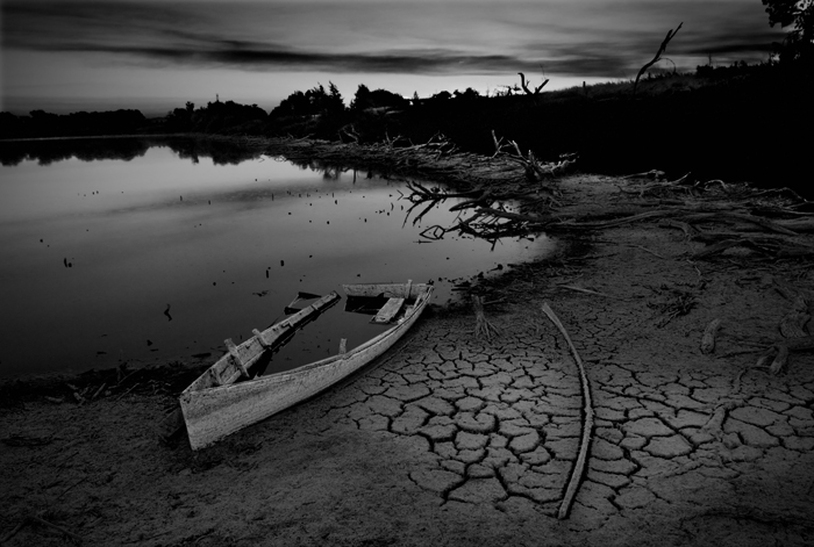Thom Halls
The Creekwalker Interview July 2007
As a photojournalist based in California's Central Valley, Thom Halls
has devoted much of his professional life to recording the details of a
landscape and a people whose simple exterior masks a deep
complexity. Based in a region of the state most people drive by on their
way to somewhere else, Halls' work chronicles the subtleties of a vital,
some would say fragile, way of life. His published works include The
Harbor, a portfolio of images depicting life in a seaport that capture the
human quest to find a safe place in this world.
websites: www.thomhalls.com
has devoted much of his professional life to recording the details of a
landscape and a people whose simple exterior masks a deep
complexity. Based in a region of the state most people drive by on their
way to somewhere else, Halls' work chronicles the subtleties of a vital,
some would say fragile, way of life. His published works include The
Harbor, a portfolio of images depicting life in a seaport that capture the
human quest to find a safe place in this world.
websites: www.thomhalls.com
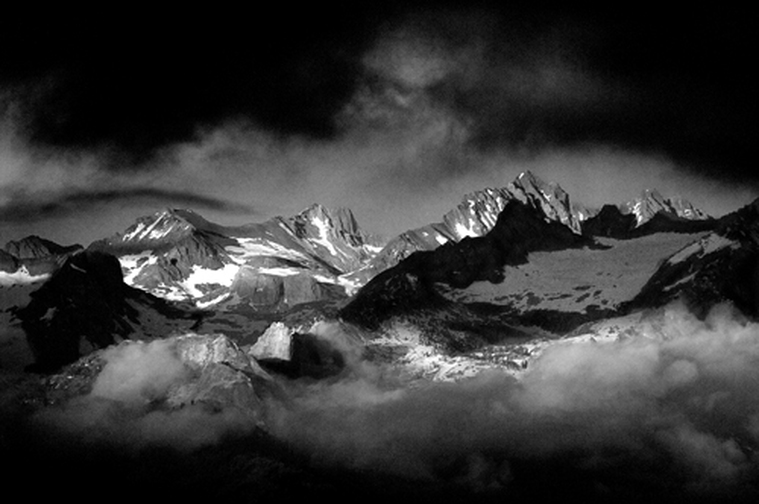
Clearing Storm
Creekwalker: Photographers, like painters and poets, find inspiration in certain geographies. You have chosen an area of California - the Central Valley - known for agriculture and a spare topography similar in certain aspects to the Mid-West. Can you comment on the appeal of this particular geography?
Halls: Over the years I’ve come to discover this as home. Like most people I found it appealing to move out and find “my own horizon”. I moved out and like so many people, found that very “horizon” brought me back here.
There is a simple reflective comfortable place. I’ve traveled to New York City several times and loved the excitement and glamour of it. However after about five days or so I found a curious thing; I wanted to see a grapevine. Seemed crazy, but what I needed was something that reminded me of home.
I love Central California partly because so many overlook it or dismiss it as inconsequential. I also love the diversity, not only in the landscape, but the people. You have everything here. I have appreciation for the farmers, the farm workers and small towns that dot the main arterial highways up and down the Valley. Within a three-hour drive I can be on the Central Coast staring at the Pacific or at the 5,000-foot elevation looking at some of the largest and oldest trees on earth. It is just awesome to be right in the middle of it.
Halls: Over the years I’ve come to discover this as home. Like most people I found it appealing to move out and find “my own horizon”. I moved out and like so many people, found that very “horizon” brought me back here.
There is a simple reflective comfortable place. I’ve traveled to New York City several times and loved the excitement and glamour of it. However after about five days or so I found a curious thing; I wanted to see a grapevine. Seemed crazy, but what I needed was something that reminded me of home.
I love Central California partly because so many overlook it or dismiss it as inconsequential. I also love the diversity, not only in the landscape, but the people. You have everything here. I have appreciation for the farmers, the farm workers and small towns that dot the main arterial highways up and down the Valley. Within a three-hour drive I can be on the Central Coast staring at the Pacific or at the 5,000-foot elevation looking at some of the largest and oldest trees on earth. It is just awesome to be right in the middle of it.
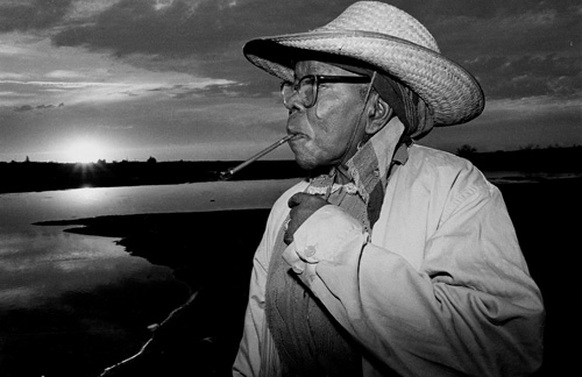
Old Fisherwoman
Creekwalker: Your photograph "Old Fisherwoman" taken in Selma, California in 1983 demonstrates superb composition and lighting. Can you comment on the story behind this photograph?
Halls: One day I was driving around one day looking for pictures. I came upon a place called Rockwell Pond, which is a man-made reservoir just outside of Selma, Calif.
On this late spring day I found the pond drained down by irrigation. On a small peninsula stood this small black woman with several lines in the water. She was successfully catching catfish.
We struck up a conversation and I found myself engaged for over an hour and a half with her. She had a lively personality and her eyes danced with life’s enthusiasm.
Halls: One day I was driving around one day looking for pictures. I came upon a place called Rockwell Pond, which is a man-made reservoir just outside of Selma, Calif.
On this late spring day I found the pond drained down by irrigation. On a small peninsula stood this small black woman with several lines in the water. She was successfully catching catfish.
We struck up a conversation and I found myself engaged for over an hour and a half with her. She had a lively personality and her eyes danced with life’s enthusiasm.
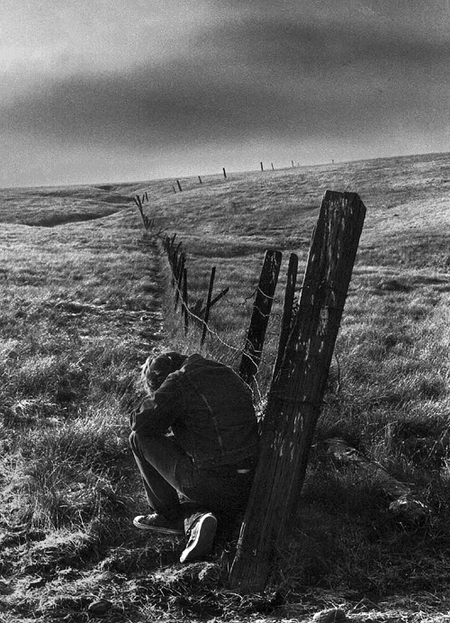
Journey
Creekwalker: Another photograph, "Journey", taken in San Luis Obispo in 1975, has a haunting quality about it. I was reminded of Andrew Wyeth's painting Christina's World in terms of the slope of the landscape and the minimal use of elements. Can you comment on the composition of "Journey"?
Halls: Journey is actually a self-portrait. For several years while living and working in San Luis Obispo I had noticed this wonderful composition of this fence disappearing over a hill in a nearby field.
In the afternoon during the summer months in this area, the wind blows very hard and when it does the coastal fog comes in about 5 p.m. This turns what was a beautiful sunny afternoon into a dreary evening.
During this period of my life I faced many difficult decisions regarding family, career. My marriage was in trouble. All I set out to do that day was to make an interesting photograph. Lacking a subject I used myself as the subject with the help of the camera’s self-timer.
Little did I know upon reflection this photograph would be not only a strong document of my mental state of mind at the time, but an iconic image that many have appreciated over the years.
Halls: Journey is actually a self-portrait. For several years while living and working in San Luis Obispo I had noticed this wonderful composition of this fence disappearing over a hill in a nearby field.
In the afternoon during the summer months in this area, the wind blows very hard and when it does the coastal fog comes in about 5 p.m. This turns what was a beautiful sunny afternoon into a dreary evening.
During this period of my life I faced many difficult decisions regarding family, career. My marriage was in trouble. All I set out to do that day was to make an interesting photograph. Lacking a subject I used myself as the subject with the help of the camera’s self-timer.
Little did I know upon reflection this photograph would be not only a strong document of my mental state of mind at the time, but an iconic image that many have appreciated over the years.
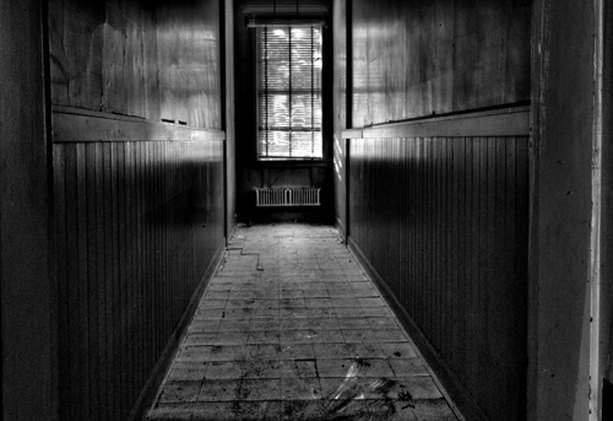
Hallway to Nowhere
Creekwalker: What camera(s) and lenses do you consider to be your base gear setup?
Halls: My base gear is Nikon digital. A D2x and D100 bodies with 17-55mm f2.8 and 70-200mm f2.8 lenses. I also have an extensive film set up and on occasion will shoot 4x5 format.
Creekwalker: What process, software and equipment do you use in your developing process?
Halls: I have a very simple workflow. I do not believe the process process are lost. I think too many photographers get tangled in technology and should be so complicated that the joy and the excitement of the discovery in the lose the glory excitement of creating.process are lost. I think too many photographers get tangled in technology and lose the glory excitement of creating.
Halls: My base gear is Nikon digital. A D2x and D100 bodies with 17-55mm f2.8 and 70-200mm f2.8 lenses. I also have an extensive film set up and on occasion will shoot 4x5 format.
Creekwalker: What process, software and equipment do you use in your developing process?
Halls: I have a very simple workflow. I do not believe the process process are lost. I think too many photographers get tangled in technology and should be so complicated that the joy and the excitement of the discovery in the lose the glory excitement of creating.process are lost. I think too many photographers get tangled in technology and lose the glory excitement of creating.
Creekwalker: There is a moral and spiritual sensibility about your work. How have your spiritual beliefs influenced your perspective?
Halls: I am a Christian and my Lord is Jesus Christ. From that perspective I strive to follow in “in his steps.” To that purpose my work has one direction: to show the glory that God has showered on this earth. But also to show man’s response including his triumphs and tragedies, handling it in a way that glorifies God.
While I revel in this opportunity I know that my efforts fall pitifully short.
As it says in Matthew 6:22 “The eye is the lamp of the body. If you eyes are good, your whole body will be full of light.” I wish to portray this magnificent world God has graced us and man’s response with in such a way that praises Him so that others may see the “light” that I see.
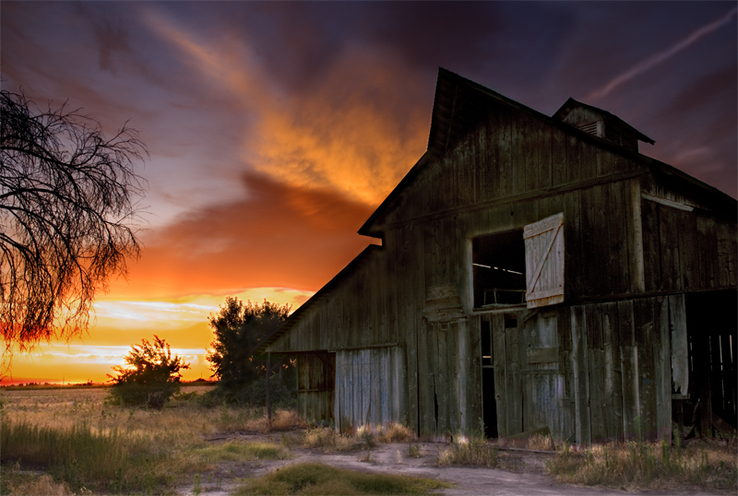
Old Barn at Sunset, Rural Fresno County, Sanger, CA
Creekwalker: Documenting the Central Valley region remains an important aspect of your work as a photographer. You refer to yourself as "a reluctant recorder" of the past and present. What are some of the issues that most concern you about the Valley?
Halls: The Valley, and California in general is under tremendous pressure from population. Though we still have vast expanses; regulation, pollution and lack of resources (water) are limiting what can be accomplished. The infrastructure of the state, are being squeezed by a commercialization transforming the Valley’s way of life.
Though we can’t turn back the clock, nor should we, we need a
thoughtful, considerate framework of the past to proceed into the future. As a documentary photographer I have a healthy respect for history. Too many of the new residents of this region have none and therefore could be doomed to repeat the mistakes of the past. The most glaring of these issues is water.
I can remember having to carry water in large buckets from the deeper well of the neighbors’ house when our well ran dry during drought years. Today, there is no consideration for the important of California’s “liquid gold”. People in the past have died over the right to this water. Dreams have been dashed and lives ruined because people did not consider the consequences of what happens when nature turns off the faucet.
Today I’m a “reluctant recorder” because I have this historical perspective and I want a certain level of the agricultural and historical uniqueness of this region to survive. I know it will change, and I embrace that, but at the same time we cannot ignore or pretend the past did not happen.
Halls: The Valley, and California in general is under tremendous pressure from population. Though we still have vast expanses; regulation, pollution and lack of resources (water) are limiting what can be accomplished. The infrastructure of the state, are being squeezed by a commercialization transforming the Valley’s way of life.
Though we can’t turn back the clock, nor should we, we need a
thoughtful, considerate framework of the past to proceed into the future. As a documentary photographer I have a healthy respect for history. Too many of the new residents of this region have none and therefore could be doomed to repeat the mistakes of the past. The most glaring of these issues is water.
I can remember having to carry water in large buckets from the deeper well of the neighbors’ house when our well ran dry during drought years. Today, there is no consideration for the important of California’s “liquid gold”. People in the past have died over the right to this water. Dreams have been dashed and lives ruined because people did not consider the consequences of what happens when nature turns off the faucet.
Today I’m a “reluctant recorder” because I have this historical perspective and I want a certain level of the agricultural and historical uniqueness of this region to survive. I know it will change, and I embrace that, but at the same time we cannot ignore or pretend the past did not happen.
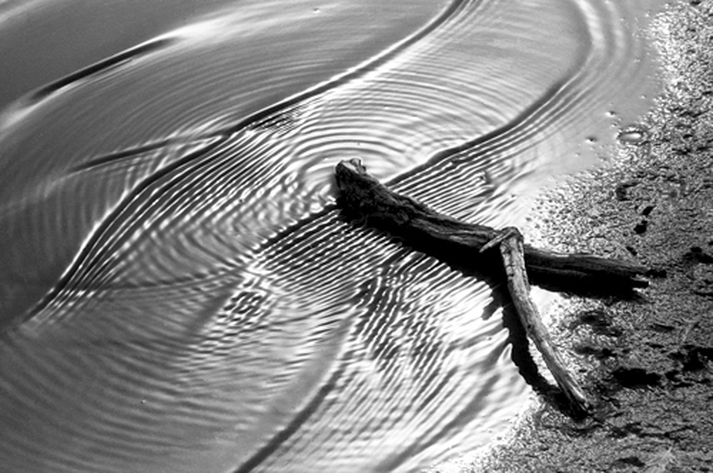
Lagoon
Creekwalker: What places are on your short list of geographies you hope to photograph someday?
Halls: Eastern Sierra, Texas, The Carrizo Plains (Eastern San Luis Obispo County, Ca.) North Coast of California.
Creekwalker: You have witnessed the accelerating shift from film to digital. How has your use of digital photography evolved over the years?
Halls: I started experimenting with digital photograph in 1989 while Director of Photography for the Fresno Bee. When I started my own business I switched from film to digital in 2002. While I see many advantages to digital I also see areas where film is of great value.
The biggest change with digital is the opportunity for the subject to influence the photographer’s thought and editing process.
When film was the only option the photographer maintained strict control over what was shown to the subject. This delay allowed time for introspection and decision-making by the photographer in creating in the processing cycle. Today after a picture is taken, the photographer and subject alike want to see it immediately. Comments are exchanged on site and decisions based on that conversation are put in place or cemented into the brain of the photographer. Immediacy has taken the place of introspection and careful image decisions.
While this is new aspect of the process is not all bad, and in some cases can makes a much better photograph, I feel there are probably great pictures deleted because of the nonobjective influence of the subject. This deletion of history will have tremendous impact photography as we look back in history.
Halls: Eastern Sierra, Texas, The Carrizo Plains (Eastern San Luis Obispo County, Ca.) North Coast of California.
Creekwalker: You have witnessed the accelerating shift from film to digital. How has your use of digital photography evolved over the years?
Halls: I started experimenting with digital photograph in 1989 while Director of Photography for the Fresno Bee. When I started my own business I switched from film to digital in 2002. While I see many advantages to digital I also see areas where film is of great value.
The biggest change with digital is the opportunity for the subject to influence the photographer’s thought and editing process.
When film was the only option the photographer maintained strict control over what was shown to the subject. This delay allowed time for introspection and decision-making by the photographer in creating in the processing cycle. Today after a picture is taken, the photographer and subject alike want to see it immediately. Comments are exchanged on site and decisions based on that conversation are put in place or cemented into the brain of the photographer. Immediacy has taken the place of introspection and careful image decisions.
While this is new aspect of the process is not all bad, and in some cases can makes a much better photograph, I feel there are probably great pictures deleted because of the nonobjective influence of the subject. This deletion of history will have tremendous impact photography as we look back in history.
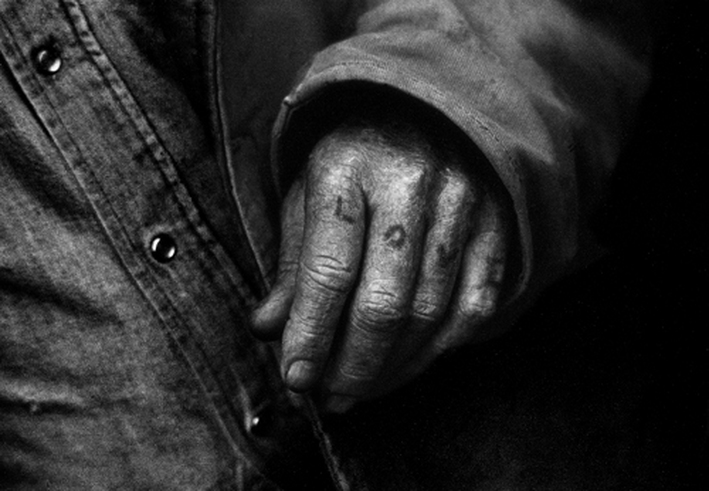
Love Tatoo
Creekwalker: Whom do you consider your major influences in
the art of fine art photography?
Halls: Dorthea Lange, Elliot Erwitt, Ansel Adams, Paul Strand, and Helen
Levitt, in that order.
Creekwalker: How has your training and background in journalism influenced your approach to photography?
Halls: An old editor of mine once gave me a great piece of advice. He told me that when I worked a story, and “when you get stopped…just remember to always persevere and find alternate sources.”
Now he was speaking specifically of reporting, but I have found his advice very sound for life in general.
As a photographer we battle creativity all the time. Let’s face it sometimes you really just don’t feel like making a picture, but you have to. This is where you can get stopped. This small piece of advice has helped me regroup my thoughts, focus my energy on the task at hand, and when I don’t ‘feel’ creative, look for an alternative source for my inspiration. It has really served me well.
the art of fine art photography?
Halls: Dorthea Lange, Elliot Erwitt, Ansel Adams, Paul Strand, and Helen
Levitt, in that order.
Creekwalker: How has your training and background in journalism influenced your approach to photography?
Halls: An old editor of mine once gave me a great piece of advice. He told me that when I worked a story, and “when you get stopped…just remember to always persevere and find alternate sources.”
Now he was speaking specifically of reporting, but I have found his advice very sound for life in general.
As a photographer we battle creativity all the time. Let’s face it sometimes you really just don’t feel like making a picture, but you have to. This is where you can get stopped. This small piece of advice has helped me regroup my thoughts, focus my energy on the task at hand, and when I don’t ‘feel’ creative, look for an alternative source for my inspiration. It has really served me well.
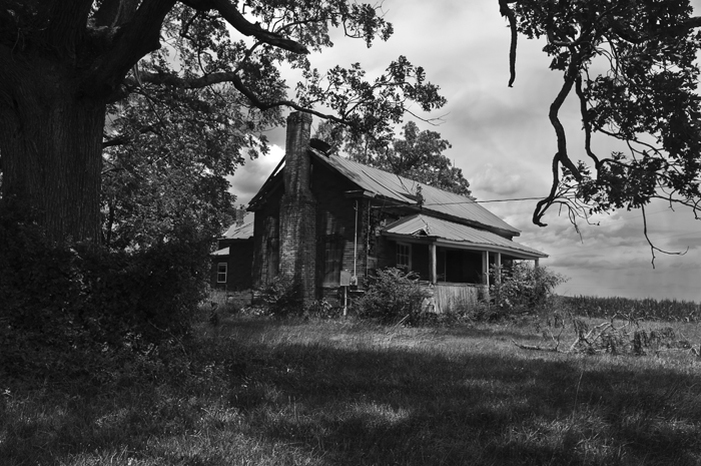
Carolina Abandoned Farmhouse
Creekwalker: What advice - artistic and commercial - would you give a novice who desires to make a living through photography?
Halls: Get a very sound technical background behind you. Know your craft from the bottom up and keep learning all the time. Not a day goes by that I don’t learn something new in my craft. The day you know it all…. you should be dead.
Lastly, whenever someone, a client or patron, asks you for something, give them more than they asked for. Nothing benefits a person more than hard work.
I’ve been at this since I was 15 years old. I truly feel like I have never worked in my life. Don’t get me wrong. I have worked hard in photography, but when it is your passion, you feel the joy work and not the burden.
The last word is if you want to work in photograph get ready for a great ride. Photography has taken me to places I never thought I’d see and other places I never want see again. I’ve seen man’s elation at accomplishment and his despair beyond belief.
The irony is this incredible journey would not have happened if not for the fact that I carried a camera around my neck and had a desire to discover.
Halls: Get a very sound technical background behind you. Know your craft from the bottom up and keep learning all the time. Not a day goes by that I don’t learn something new in my craft. The day you know it all…. you should be dead.
Lastly, whenever someone, a client or patron, asks you for something, give them more than they asked for. Nothing benefits a person more than hard work.
I’ve been at this since I was 15 years old. I truly feel like I have never worked in my life. Don’t get me wrong. I have worked hard in photography, but when it is your passion, you feel the joy work and not the burden.
The last word is if you want to work in photograph get ready for a great ride. Photography has taken me to places I never thought I’d see and other places I never want see again. I’ve seen man’s elation at accomplishment and his despair beyond belief.
The irony is this incredible journey would not have happened if not for the fact that I carried a camera around my neck and had a desire to discover.
© Copyright 2007 Creekwalker. Photography © Thom Halls. All rights reserved.
